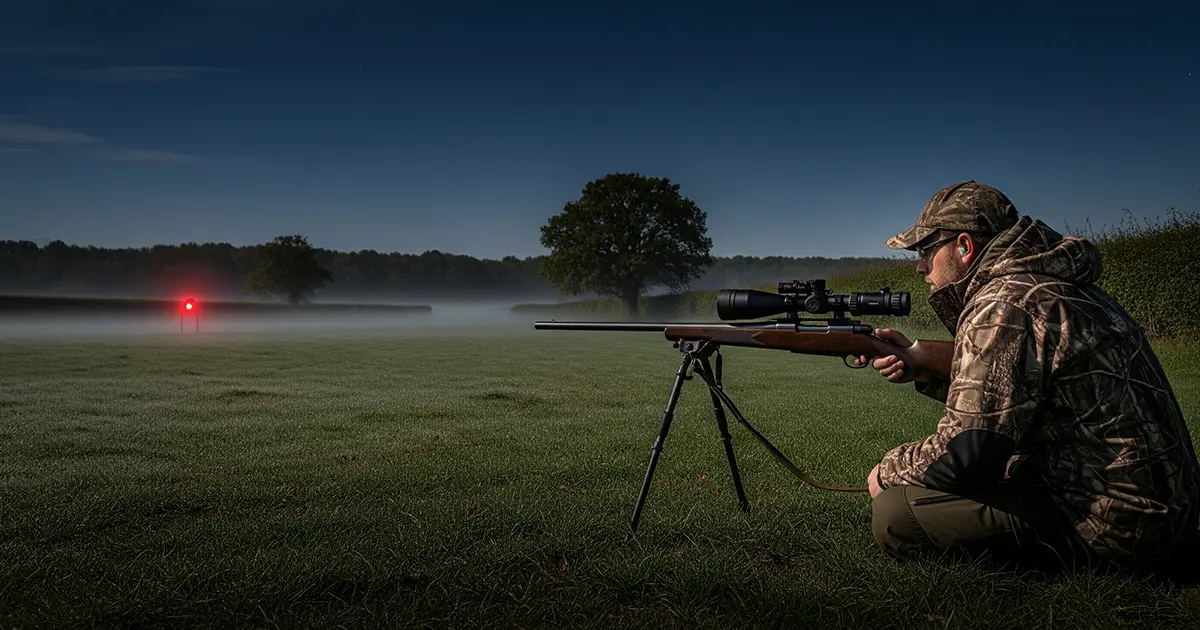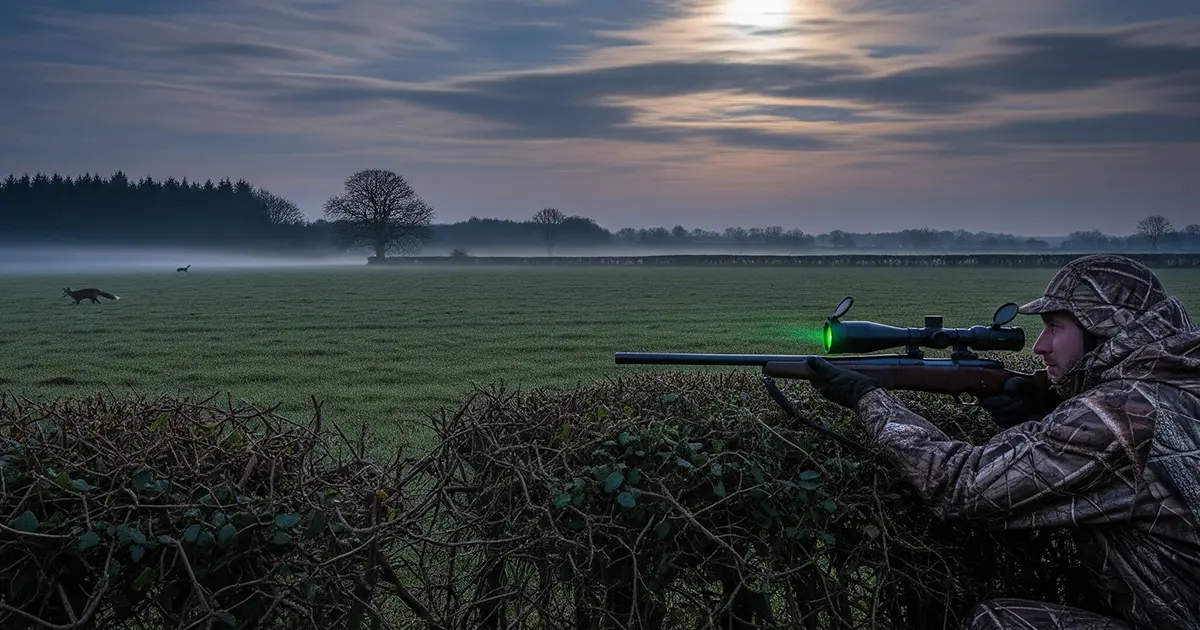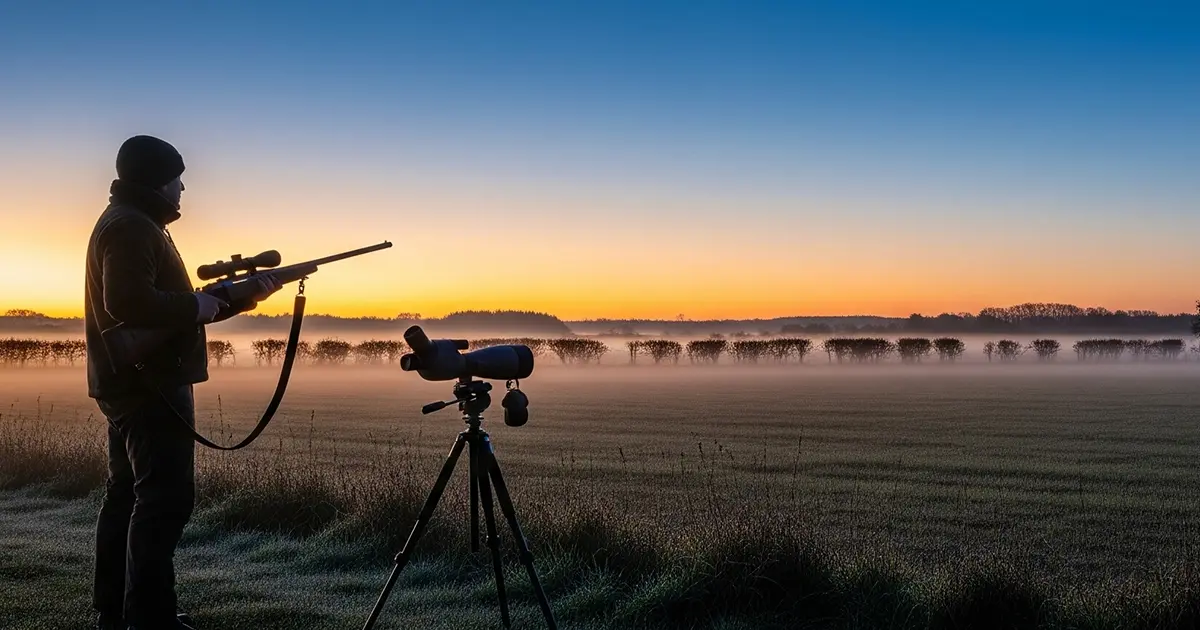Night vision equipment has become an invaluable tool for pest control and certain forms of shooting in the UK. Whether you are managing rabbits in the paddocks or keeping foxes away from livestock, a properly set up scope can make the difference between a clean, ethical shot and a missed opportunity. This guide walks you through mounting, zeroing, and maintaining your night vision scope, while covering safety considerations and the legal requirements every responsible shooter must follow.
Start with the Right Equipment
Not all night vision scopes are created equal, and not all will suit your rifle or your intended use. The first step is ensuring compatibility. Dave Bellamy, Managing Director of The Instinctive Shooter, notes, “We often see customers buying high-end optics only to find the mounting system does not fit their rail, or the scope sits too high for a proper cheek weld. Getting the right mount and scope pairing saves a lot of frustration.”
When you buy from a trusted supplier like The Instinctive Shooter, you can bring your rifle in so the fit can be checked before you commit. This also allows for expert advice on accessories such as IR illuminators and batteries.
Mounting Your Night Vision Scope
Start by ensuring the rifle is unloaded and the action is open. Check your mounting rail type (Picatinny, Weaver, or Dovetail) and choose mounts that match both the rail and the scope’s tube or base. Place the scope on the mounts loosely at first so you can adjust eye relief.
Set the rifle in a secure rest or cradle, shoulder it naturally, and move the scope forward or back until the image is clear and comfortable without stretching or craning your neck. Once positioned, tighten the mounts gradually in an alternating pattern to keep the scope level. Use a torque wrench if possible to avoid overtightening, which can damage both mounts and scope housing.
Pro Tip: If you use your rifle both day and night, consider a quick-release mount so you can swap optics without losing zero.
Zeroing in Daylight for Night Success
Trying to zero a scope in pitch black is a recipe for frustration. A far better method is to zero in good light using the night vision’s daytime setting (or with the lens cap filter in place, if your device has one).
Choose a safe range with a solid backstop and set your target at the distance you will most often shoot at night. For fox control, this is often 100 metres. Fire a group of three shots, note the point of impact, and adjust the windage and elevation accordingly.
“Daylight zeroing not only saves time later, it also means you can confirm your rifle and scope are working perfectly before heading out in the dark,” says Dave. “We’ve had customers arrive with zeroing issues in the field that could have been solved at home in minutes.”
Understanding the Law
UK firearms law is clear: night vision may be used for certain quarry such as rabbits and foxes, but it is not permitted for deer stalking during hours of darkness. Always check the current legislation for your region, as Scotland, England, and Wales can have different provisions.
A quick reference box on your kit checklist can help avoid costly mistakes:
- Legal for pest species at night with the correct firearm and certificate.
- Illegal for shooting deer in darkness, regardless of equipment.
- Always shoot within your own land permissions and safety boundaries.
Tackling Common Problems
Image Quality: Grainy or blurry images can often be solved by fine-tuning the focus on both the eyepiece and the objective lens. Position your IR illuminator so it lights the target without glaring back into the scope.
Battery Life: Keep batteries warm in an inside pocket on cold nights. Always carry spares and avoid mixing old and new cells.
Weather Impact: Thermal scopes handle fog better than night vision, but you can still improve clarity by reducing IR brightness and keeping lenses dry with a microfibre cloth.
Maintenance That Protects Your Investment
Night vision optics are precision instruments. Store them in a padded case with silica gel packs to prevent moisture build-up. Clean lenses only with a lens-specific solution and cloth, never household cleaners. Wipe down external surfaces to remove mud, dust, and fingerprints, which can corrode finishes over time.
If you are unsure about internal cleaning or software updates, let a professional handle it. The Instinctive Shooter offers servicing and diagnostics for optics, ensuring your investment stays in perfect working order.
Real-World Example: From Missed Shots to Confidence
One of our customers, a Lincolnshire farmer, came to us after missing several foxes at night. His scope was mounted too far back, the IR was set too bright, and the zero was off by several inches. After a fitting session and daylight zeroing at our range, he reported clean, confident shots from the very next outing. Small adjustments can have a huge impact on results.
Final Thoughts
Setting up your night vision scope is not a one-step job. It is a process of matching equipment, mounting correctly, zeroing in daylight, understanding legal limits, and maintaining your gear. Done properly, it will reward you with reliable performance and ethical shooting every time.
For tailored advice, expert fitting, and a range of compatible mounts and accessories, The Instinctive Shooter is here to help. Visit our shop or call to arrange a fitting session before your next night shoot.
Night Vision Know-How: Your Questions Answered
Can I Use Night Vision For Deer Stalking In The UK?
No. Night vision and thermal imaging cannot be used for shooting deer during hours of darkness under UK law. They can be used for certain pest species, but you must always check the latest legislation before heading out.
What Is The Best Distance To Zero A Night Vision Scope?
It depends on your typical shooting scenario. For fox control, many shooters choose around 100 metres, but for smaller pests like rabbits you might prefer 50 to 70 metres for greater accuracy.
Do I Need An IR Illuminator With My Night Vision Scope?
Most digital night vision units work best with an IR illuminator in very low light, as it boosts clarity and extends range. The key is to choose one that matches your scope’s wavelength and avoid over-bright settings that cause glare.
Will A Night Vision Scope Work In Fog Or Rain?
Night vision performance drops in fog, rain, or high humidity because the IR light reflects off moisture particles. Reducing IR brightness and keeping the lens clean can help, but thermal optics usually cope better in these conditions.
How Long Do Batteries Last In Night Vision Scopes?
Battery life varies widely depending on the model, settings, and temperature. Cold weather drains batteries faster, so carry spares in a warm pocket and always start with fully charged or fresh cells.
How Can I Tell If My Scope Mount Is Compatible With My Rifle?
Check your rifle’s rail type, usually Picatinny, Weaver, or Dovetail, and ensure the scope mount matches both rail and scope dimensions. A professional fitting can save time, money, and avoid damaging your equipment.
What Is The Safest Way To Clean A Night Vision Scope Lens?
Use a lens-specific cleaning solution and a soft microfibre cloth, never paper towels or household cleaners. Store the scope with silica gel packs to keep moisture at bay and prevent internal fogging.




